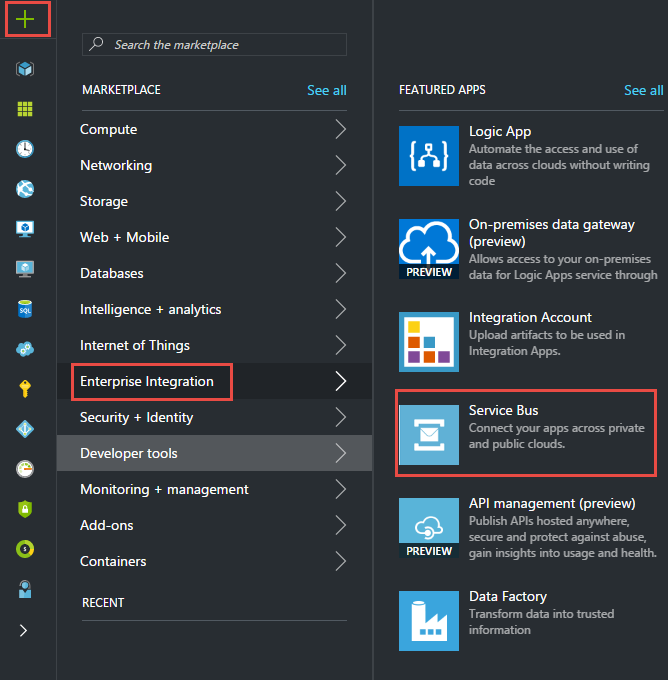In this recipe, we will walk you through the setup and registration of an Azure Service Bus. This is in preparation for the next recipe where we write a remote service context to the Service Bus. This example is specific for Dynamics 365 online; on-premise instances may require some certificate configuration, as well as Internet access to the asynchronous service.
On the Azure side, you will need a user with enough privileges to create a new service bus. On the Dynamics 365 side, you will need a user with a System Customizer or Administrator privileges to register the endpoint in your instance. You will also need the plugin registration tool available from the Dynamics 365 SDK.
- Log in to the new Azure portal (https://portal.azure.com) with an account that has the correct privileges.
- From the left-hand side navigation, go to
+| Enterprise Integration|Service Bus, as shown here:

- Enter the following details:
- The namespace name...



